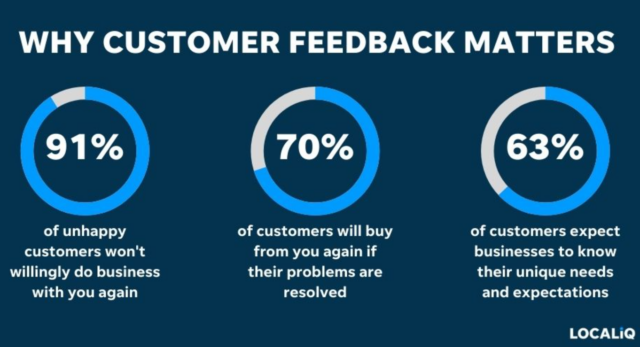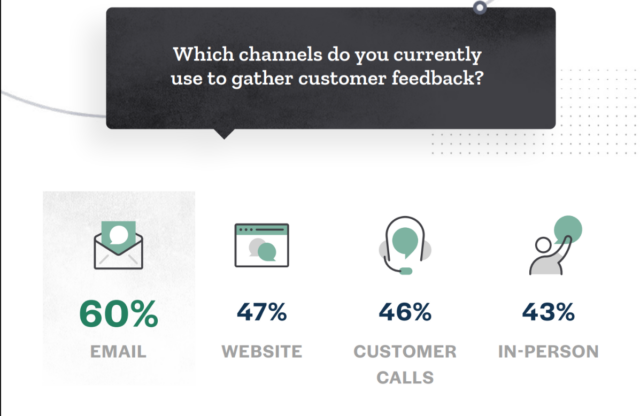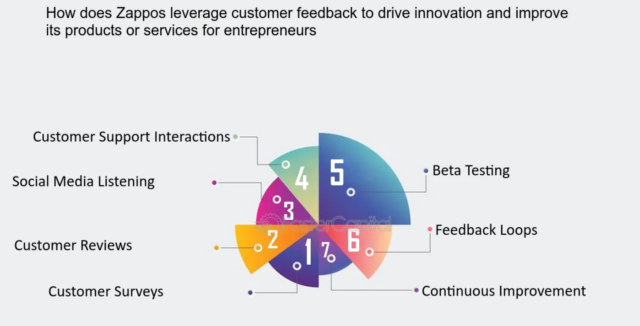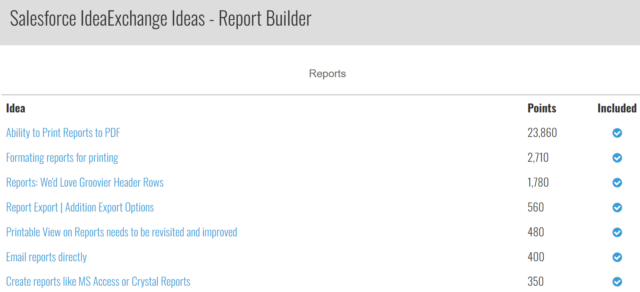Navigating the contemporary business landscape requires more than just providing a product or service; it demands a keen understanding of customer sentiments. In this era of connectivity, customer feedback serves as a valuable compass, guiding organizations toward success. The essence of understanding and interpreting customer sentiments lies at the heart of effective decision-making and continual improvement.
In this article, we will explain the strategic importance of deciphering customer sentiments. We will dig deeper into methods employed to extract meaningful patterns from feedback data and, how businesses can leverage them.
Value of Customer Feedback
Today competition is fierce and consumer expectations are continually evolving, the intrinsic value of customer feedback cannot be overstated. Feedback serves as a direct line of communication between businesses and their clientele, offering a window into the customer experience.
Understanding Customer Needs
Customer feedback is crucial for businesses, providing a direct pathway to understanding the intricate landscape of customer needs and expectations. By attentively analyzing feedback using a Likert scale chart, organizations gain insights into the specific features, functionalities, or experiences that matter most to their clientele.
“If you’re competitor-focused, you have to wait until there is a competitor doing something. Being customer-focused allows you to be more pioneering.” Jeff Bezos, Founder of Amazon.com
Building Customer Loyalty
When customers perceive that their opinions are not only heard but actively considered, a sense of trust and loyalty flourishes. This two-way communication creates a bond that extends beyond transactions, transforming customers into brand advocates.
Improving Products and Services
By meticulously scrutinizing feedback, businesses can identify pain points, address shortcomings, and refine their offerings. This iterative process positions the business as responsive and committed to delivering value and helps prevent customer churn.
Enhancing Customer Experience
Through customer feedback, businesses can pinpoint touchpoints in the customer journey that require refinement or innovation. Customer Identity Verification Solutions play a crucial role in this process by ensuring that customer interactions are secure and personalized. These solutions not only help in verifying the identity of customers to prevent fraud but also aid in creating a seamless customer experience. By integrating Customer Identity Verification Solutions, businesses can enhance trust and safety, which are paramount in personalizing customer interactions and improving overall satisfaction.
These days, mobile’s where it’s at for businesses – they’d be lost without Mobile Analytics. Digging into all the nitty-gritty details of how people use apps and websites on their phones? That’s the key to really getting customers. Mobile Analytics lets companies crack the code of those digital journeys across every screen and tap. The insights are pure gold – they show exactly where and how to up their game to wow people.
Looking for an app development company in Dallas? You’re basically plugging into a tech scene that’s way more than just nerds writing code – these folks are digital problem solvers who speak the language of business. When you find the right app development company in Dallas, you’re not just getting developers, you’re getting strategic partners who can turn your napkin sketch into a killer digital product that might just change your whole game.
Gathering Customer Feedback Through Various Channels
Customer feedback is a multifaceted entity, and businesses employ diverse channels to capture this invaluable information and present it in the form of customer or client testimonials.
Below are some other channels that serve as gateways through which customers articulate their opinions and experiences. These channels provide businesses with a comprehensive understanding to build their marketing strategy.
The primary feedback channels include:
Surveys
- Surveys are structured tools that allow businesses to gather specific insights from their customer base;
- They can be conducted through online forms, emails, or even in-app questionnaires, providing a systematic approach to collecting feedback. For conducting surveys through email, you can use tools like Hubspot or Constant Contact.
Want to make collecting feedback easier? Just add a scannable QR code to your surveys! The best QR code generator can help you find out what people think in seconds by taking them right to your form. It’s a neat way to get comments, especially in places like shops or various events.
Social Media
- Social media platforms have become dynamic arenas for customer expression;
- Monitoring follower’s comments, mentions, and direct messages on platforms offers real-time insights into customer sentiments. Business can monitor:
- Twitter;
- Facebook;
- Instagram;
- TikTok;
- Pinterest.
Customer Support Interactions
- Interactions with customer support teams yield firsthand information about individual experiences;
- Conversations with support staff provide qualitative data that can be instrumental in understanding customer pain points and preferences.
Modern customer support phone solutions have totally changed the game when it comes to understanding what customers really want. Gone are the days of basic call logs – now support teams can spot trends in real-time, catch the tone of conversations, and actually do something useful with all that feedback.
Smart phone systems don’t just handle calls anymore – they’re like having an extra team member who never misses a detail about what customers are saying and feeling.
Online Reviews
- Platforms such as Yelp, Google Reviews, and industry-specific review sites are rich sources of unfiltered customer feedback; consider embedding Google reviews on your website;
- Analyzing reviews helps businesses gauge overall satisfaction and identify specific aspects that resonate positively or need improvement.
Importance of Diverse Feedback Sources
The significance of diverse feedback sources lies in the comprehensive perspective they provide. Monitoring surveys, social media interactions, customer support engagements, and online reviews ensure a well-rounded understanding of customer sentiment.
Utilizing Technology for Efficient Feedback Collection
In an era driven by technology, businesses can leverage advanced tools and platforms to streamline the feedback collection process. Implementing technology offers several advantages, including:
- Automated survey tools can efficiently gather feedback at scale, saving time and resources;
- Utilizing analytics tools helps in extracting actionable insights from large datasets, turning raw feedback into meaningful trends;
- Technology enables businesses to monitor social media and online reviews in real time, allowing for immediate responses to customer concerns;
- Tailoring feedback forms based on customer profiles or purchase history enhances the relevance and quality of the collected data.
Analyzing Customer Feedback
The process of analyzing customer feedback is a crucial step in transforming raw data into actionable insights. It involves decoding the nuances of customer sentiments and discerning patterns that can inform strategic decision-making.
Importance of Systematic Analysis
Customer feedback, in its raw form, is a treasure trove of information waiting to be deciphered. By employing a structured approach, businesses can unravel patterns, trends, and hidden meanings within feedback. It helps them to make informed decision-making and strategic improvements.
Common Analysis Techniques
Various techniques are employed to make sense of the diverse data collected from different channels. Here are some common analysis techniques:
Sentiment Analysis
Sentiment analysis gauges the emotional tone expressed in customer feedback. By categorizing sentiments as positive, negative, or neutral, businesses can quantitatively assess overall customer satisfaction and identify areas for enhancement.
Text Mining
Text mining involves extracting valuable information from unstructured text data. This technique allows businesses to identify recurring themes, keywords, and patterns within customer comments. Text mining offers deeper insights into specific aspects of the customer experience.
Customer Segmentation
Segmenting customers based on their feedback allows businesses to tailor strategies to distinct customer groups. Understanding the diverse needs and preferences of different segments facilitates targeted improvements and personalized customer engagement.
Holger Sindbaek, the owner of World of Card Games, says, “After acquiring WOCG, I realized that a one-size-fits-all approach wouldn’t work for our diverse player base. We gained deeper insights into each group’s unique preferences by segmenting customers based on gameplay frequency, subscription status, and feedback patterns. For example, frequent players often left detailed feedback on advanced features, while casual users highlighted areas related to accessibility and ease of use.
This segmentation allowed us to prioritize updates and improvements aligned with each group’s needs, resulting in higher satisfaction across the board. By analyzing customer feedback through segmentation, we didn’t just address surface-level issues — we fine-tuned the experience for specific segments, improving overall engagement and loyalty
Thematic Analysis
Thematic analysis involves identifying and analyzing themes or recurring topics within customer feedback. This technique provides a qualitative understanding of customer perceptions, allowing businesses to address overarching issues and capitalize on positive themes.
A good slots guide really helps you spot these patterns in what players actually care about, showing exactly how different game features hit different emotional buttons. When you study real player experiences instead of just theoretical stuff, you can build games people actually want to play – ones that get them excited without burning them out too quickly.
The best guides don’t waste time on boring technical specs nobody cares about – they dig into the psychology of why people keep coming back to certain games and not others. When you understand this stuff, you can talk to your different player types in ways that actually connect, instead of blasting the same generic promos that everyone ignores.
Leveraging Data Analytics Tools
Data Analytics offers advanced capabilities such as:
- NLP algorithms enhance the understanding of textual data, enabling more accurate sentiment analysis and text mining;
- Machine learning algorithms can predict trends and patterns in customer feedback, providing proactive insights for decision-making;
- Graphical representations of data through tools like charts and dashboards facilitate easy interpretation of complex feedback datasets.
Deepening the analysis of customer insights is vital for strategic advancement. To effectively gain insights, it’s imperative to learn how to transform this in-depth analysis into actionable strategies. Exploring sophisticated analytical techniques allows a company to convert detailed insights into operational successes. This investigative process not only widens the scope of understanding but also strengthens the ability to propel growth through dedicated strategic execution.
Turning Insights into Actionable Steps
It is the pivotal bridge between understanding customer feedback and effecting meaningful change. By identifying key insights, prioritizing actions, and creating a well-defined action plan, businesses can position themselves to thrive.
Identifying Key Insights
The true value emerges not just from understanding customer sentiments but from distilling actionable insights that can drive meaningful change. The essential process of identifying key insights within the vast landscape of customer feedback includes.
Positive Feedback
Positive feedback serves as a foundation for reinforcing and enhancing existing strengths. Identifying aspects that customers appreciate provides a roadmap for maintaining and amplifying positive experiences.
Negative Feedback
Negative feedback is key to addressing improvement areas and rectifying pain points.
Understanding the root causes of dissatisfaction allows businesses to implement targeted solutions and enhance overall customer satisfaction. In case that dissatisfaction is your fault make sure to accept that and apologize to your clients. And if the issue is global, consider doing a live stream and addressing it, but when doing so ensure ultra-low latency video streaming for a seamless and immediate connection with your audience.
Utilizing a robust Video Streaming Platform can help organizations deliver high-quality, real-time content to audiences, enhancing engagement and ensuring an immersive viewer experience. Staying abreast of streaming trends is essential for organizations aiming to optimize their content delivery and audience engagement strategies.
Emerging Trends
Recognizing emerging trends in customer feedback provides foresight into changing preferences and expectations. Staying attuned to evolving trends enables proactive adjustments to products, services, or processes, ensuring continued relevance.
Prioritizing and Creating Actionable Steps
- Focus on high-impact and time-sensitive improvements to ensure efficient resource allocation;
- Prioritizing steps that directly align with customer needs and preferences reinforces a customer-centric approach;
- Clearly defining objectives based on identified insights provides a roadmap for the action plan;
- Allocating necessary resources, whether in terms of personnel, technology, or budget, ensures the successful execution of the action plan.
Examples of Companies Implementing Customer Feedback Analysis
Here are some examples that showcase how industry leaders leverage customer feedback analysis. It also showcases how the analysis helps them refine products, services, and overall customer experience:
Zappos: Revolutionizing Customer Service
Zappos, renowned for exceptional customer service, utilizes customer feedback analysis to refine its support. By closely examining customer comments, Zappos continuously improves its service offerings and fosters a customer-centric approach.
Salesforce IdeaExchange: Collaborative Innovation
Salesforce, a leading CRM platform, has established IdeaExchange, a community-driven feedback platform. It allows users to submit ideas, and feedback, and engage in discussions, enabling Salesforce to implement customer-suggested features and enhancements.
Uber: Fine-Tuning the Ride Experience
Uber employs customer feedback analysis to enhance the rider and driver experience. It empowers the decision-makers to identify pain points and address them, ensuring continuous improvement of its global ride-sharing platform.
More brand like TappAXI are using the same approach now. Beyond merely collecting feedback, successful ride-sharing platforms are now using advanced machine learning algorithms to predict potential issues before they even arise, turning customer insights into proactive problem-solving strategies. The most innovative companies in this space are transforming raw feedback data into actionable intelligence that doesn’t just fix problems, but reimagines the entire customer experience from the ground up.
By creating sophisticated feedback loops that connect rider experiences, driver perspectives, and operational data, these platforms are essentially building a self-improving ecosystem that gets smarter and more efficient with every single ride.
Best Practices in Customer Feedback Analysis
Take a look at some of the best practices to meet current customer needs. The practices help businesses to excel in the ever-changing landscape of consumer preferences and market dynamics.
Regular and Timely Feedback Collection
Implement regular surveys, polls, and feedback mechanisms to capture real-time insights. This practice ensures that your analysis reflects the evolving needs and expectations of your customer base. Swift feedback collection enables proactive responses, demonstrating your commitment to addressing concerns promptly. If you’ve already invested in web and app development you can easily automate this process and regularly collect feedback through your app and website.
Training Employees for Customer Interaction
Provide comprehensive training on effective communication and customer engagement techniques. Consider using Loom alternatives to facilitate real-time feedback sessions and enhance team collaboration.
Equip your team to ask the right questions, actively listen to customer responses, and encourage open dialogue. Skilled staff contributes to the accuracy and depth of the feedback received, enhancing the overall quality of your analysis. Once your customer support agents have enough experience, encourage them to use teaching platforms to share their expertise with others.
Integrating Feedback Analysis into Decision-Making Processes
Ensure that insights derived from customer feedback inform strategic decisions, product/service improvements, and operational changes. Establish a structured feedback loop where analysis results are shared across relevant departments within the organization.
Challenges and Solutions of Customer Feedback Analysis:
Dealing with Overwhelming Data
- The sheer volume of feedback data from various sources can be overwhelming, making it difficult to extract meaningful insights efficiently;
- Implement automated data collection and analysis tools to streamline the process;
- Set specific criteria for data relevance to focus on actionable insights.
Addressing Negative Feedback
- Negative feedback can be challenging to handle and may impact brand reputation if not addressed promptly and effectively;
- View negative feedback as an opportunity for improvement rather than a setback;
- Respond promptly and empathetically to customer concerns, acknowledging their feedback and demonstrating a commitment to resolving issues.
Ensuring Privacy and Security
- Customer feedback often contains sensitive information, raising concerns about privacy and security compliance;
- Implement robust data protection measures and adhere to privacy regulations such as GDPR and CCPA;
- Invest in secure data storage and transmission protocols to safeguard customer information from unauthorized access or breaches.
When it comes to marketing data privacy, smart brands are realizing that trust is the new currency. This isn’t about checking boxes or dodging legal bullets – it’s about creating a relationship where customers feel genuinely respected and in control.
By putting privacy at the heart of your marketing strategy, you’re not just protecting data – you’re building a connection that goes deeper than any algorithm. The most successful companies understand that privacy isn’t a limitation; it’s an opportunity to stand out in a world of digital noise.
When customers know you’re fighting for their right to control their own information, they don’t just become consumers – they become advocates.
Final Thoughts
By leveraging a customer-centric approach and in-depth feedback analysis, businesses can thrive in today’s dynamic marketplace. As a result, they can forge stronger connections with their customers and achieve long-term success.






